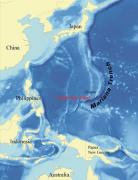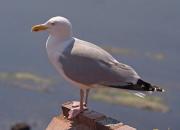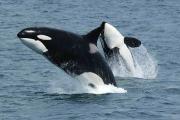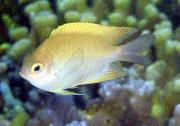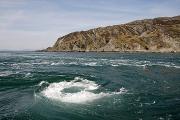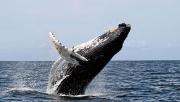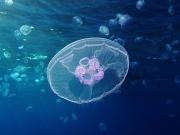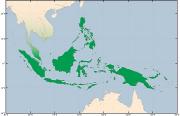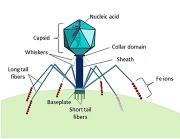Radio Program
Our regular Science and the SeaTM radio program presents marine science topics in an engaging two-minute story format. Our script writers gather ideas for the radio program from the University of Texas Marine Science Institute's researchers and from our very popular college class, Introduction to Oceanography, which we teach to hundreds of non-science majors at The University of Texas at Austin every year. Our radio programs are distributed at to commercial and public radio stations across the country.
In Greek mythology, Hades was the underworld -- the dark realm of the dead. And that seemed like a good description of the deepest parts of the ocean. They’re dark, and until fairly recently were thought to be lifeless. So scientists called the region below about 20,000 feet the hadal zone, after Hades.
It turns out, though, that the hadal zone is a lot livelier than expected. Biologists have discovered more than 400 species there -- fish, shellfish, worms, snails, and others. They’ve also found thriving colonies of microorganisms in the sediments.
People who picnic on the beach sometimes face a greedy pest: a seagull. Gulls grab the food around people -- and have even been known to take it right out of an eater’s hands. And some recent research says that’s no coincidence -- the gulls appear to prefer food that’s been handled by humans.
Scientists at Exeter University checked out the preferences of herring gulls on the southwestern coast of England. They offered the gulls a choice of two Ma Baker’s blueberry bars, which are wrapped in bright blue packaging.
Clear skin is worth some extra time -- even for a whale. In fact, some whales may leave their usual feeding grounds for weeks to clear up their skin.
Many whales found in cold polar waters have sickly looking skin. It’s covered by a slimy yellow layer of algae. But the skin of other whales in the same areas looks clear and healthy.
Whales that spend most of their time in polar waters sometimes head for the tropics. The leading ideas have said the trips provide access to better feeding grounds, or protection for calves.
Most fish in the oceans don’t do anything to protect their offspring. They release their eggs, then move on. So most of the eggs get eaten, and most of the fish that hatch get eaten as well.
So the few species that do protect their young have an advantage. In fact, other fish sometimes try to profit from that protection by sneaking their own eggs into the nest. So their kiddos get free babysitting from the other parents.
An albatross is a perfect sentinel for watching the oceans. It’s big, it flies fast, and it can stay at sea for months, so it covers a large area. And it can sniff out fish from miles away. The combination could make the birds good deputies for tracking down illegal fishing operations.
Such operations catch billions of dollars’ worth of fish. They sometimes fish in protected areas, take more than the limit, or use equipment that can damage the environment. And when they do so, the operators often turn off the automated radio beacons that identify them.
About twice a day, more than half a trillion gallons of water flow into and out of Passamaquoddy Bay, on the coasts of Maine and New Brunswick. The massive flow creates eddies, currents, and troughs -- including the largest whirlpool in North America.
The Old Sow has been measured at up to 250 feet wide, with an estimated depth of up to 12 feet. It’s not always a funnel-shaped hole in the surface, though. It often consists of several smaller funnels, along with walls of water, spouts, and other features.
To those who appreciate their beauty, great whales are priceless. For those who prefer cold hard facts, a recent study estimated their value: about two million dollars apiece. That comes from their benefits to the environment.
Great whales are the giants of the whale family -- a total of 13 species, including blue, humpback, sperm, and bowhead. They’re found in all the world’s oceans.
Researchers have given pacemakers to moon jellyfish. That makes the jellyfish swim faster. And in the future, similar devices may allow scientists to control the jellyfish -- turning them into deep-sea explorers.
For the jellyfish experiment, scientists placed a tiny probe in the bells of moon jellyfish. These creatures are found in oceans all over the world, from the tropics to much colder regions. They’re big -- the size of a dinnerplate or bigger. And you can see right through them.
The phrase “Maritime Continent” sounds like an oxymoron. One word refers to the oceans, the other to land. Yet it’s a name that oceanographers and climate scientists have applied to a region around Southeast Asia. That’s because there’s a strong interaction between land and sea there -- an interaction that affects the climate of the entire planet.
If you swallow a mouthful of seawater, you’ll down a good supply of minerals, the wastes of lots of marine creatures, and tens of thousands of bacteria. And for good measure, you’ll get millions of viruses. Fortunately, they’re not likely to be harmful to people. But they can have a big impact on marine life.

